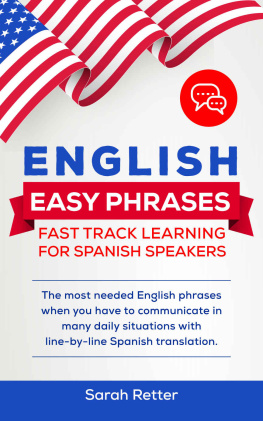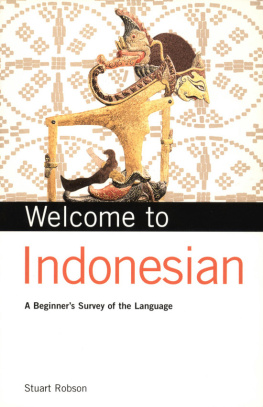Introduction
As the fourth most populous country in theworld and Indonesias growing economic importance, Bahasa Indonesia is set tobecome one of the most spoken languages in the future.
Given its growingrelevance of Bahasa Indonesia in Asian century, whats the best way to masterthe language? The most common route is to learn in a classroom environment. And lets be honest, its boring. It dulls the fluidity inexpressing yourself and it takes the fun out by imposing standardized exams.Its fine if you learn Bahasa Indonesia for academic purpose. If you aim toattain conversational mastery in a fun way however, dating a BahasaIndonesia native speaker is a way to go. Dating engages some of our deepest emotions(love, jealousy, anxiety and excitement) which are effective in burning thelanguage into your long term memory. continuous communication) to keep the sparks going either viaface to face or on-line. continuous communication) to keep the sparks going either viaface to face or on-line.
This e-book will arm you to converse in BahasaIndonesia confidently from dating to wedding. To save you a headache, you willalso find some cultural references. In South Asian culture its the men who doall the wooing. Thus this e-book is geared toward male readers in mind. The chapters are organized according to phasesin relationship. Chapter 1 to 4 is comprised of 4 parts: vocabulary (kosakata), conversation (percakapan), common expression (ungkapanumum) and hint (petunjuk).
Those parts are written in tandem toreinforce the learning for each chapter. Conversation illustrates how to stringvocabulary together and start meaningful conversations. Common expression letsyou quickly pick a line. And hitnt provides a cultural compass around dating.The last chapter outlines most commonly used slangs in dating and contextaround it. Just like any language, word for wordtranslation doesnt always work (ask Google Translate if you dont believe me).To learn a language is to learn cultural reference that comes with it. Toexpress yourself fluidly you need to respect the culture that inevitablycolours the expression in language.
This e-book isnt a grammar nor a completedictionary of Bahasa Indonesia. My goal as a native Bahasa Indonesia speaker isto give you the first hand account of the knits and bolts of dating BahasaIndonesia speaker with practical application in mind. Thus only grammar andvocabulary I deem most relevant for that purpose will be outlined. Feel free to skip the grammar bit and divestraight into the chapters if you are the type of person who learns as you fly.The grammar will often make more sense once you see it in practice. Of course I am not suggesting you need to goout and date any Indonesian to get the most out of this e-book. Its great ifyou are currently in relationship or expecting to start one.
Even if you haveno intention for dating, you will still find these lessons valuable for dailyconversation. With lots of practice you will find yourBahasa Indonesia improves dramatically and who knows you might find a true lovealong the way! Best wishes, Hendra Makgawinata Sydney, 09/06/2015
Overview ofBahasa Indonesia:
Pronunciation and Grammar
Indonesia consists of hundreds of distinctethnics, cultures and dialects. As a nation of great diversity, BahasaIndonesia serves as a unifying force and forges a shared national identitytogether with Pancasila, Indonesias national ideology. Bahasa Indonesia is mostly phonetic, meaning aword is pronounced the same way as it is spelled without much emphasis onintonation e.g. selamat (congratulations) is segmented into 3 syllables withalmost equal stress (se/la/mat). welcome (stronger stress on firstsyllable). welcome (stronger stress on firstsyllable).
Since Bahasa Indonesia stresses all syllables almost equally, ittakes longer to read Indonesian sentences compared to English of same length asunstressed syllables in English are slurred or pronounced almost inaudibly. The table below illustrates the comparison ofalphabet pronunciations in Bahasa Indonesia and English.  Some vowels are combined to produce diphthongsas below:
Some vowels are combined to produce diphthongsas below:  On forming a sentence, grammatically speaking,Bahasa Indonesia is similar to English. A sentence is comprised of subject,followed by verb/predicate and then object.
On forming a sentence, grammatically speaking,Bahasa Indonesia is similar to English. A sentence is comprised of subject,followed by verb/predicate and then object.
The Question on When
Unlike English, Bahasa Indonesia grammar doesnot have past, present or future tense.
Saya pergi ke bioskop sama Dewi kemarin (I went to cinema with Dewi yesterday ).
Saya nonton film di bioskop samaDewi sekarang (I watch movie incinema with Dewi now ).
Saya akan pergi ke bioskopsama Dewi besok (I will go tocinema with Dewi tomorrow ).
Saya akan pergi ke bioskopsama Dewi besok (I will go tocinema with Dewi tomorrow ).
Heres a list of words that represent time: Past ( masa lalu )  Present (saat ini)
Present (saat ini)  Future ( masa depan )
Future ( masa depan ) 
Question tenses
Conversation isa two way communication; so its always helpful to know how to construct aquestion tense. Heres a list of question words:

Notes:
Examples:
Yang a pointer and relative pronoun Yang functions as a pointer when followed byan adjective e.g. yang manis (the cute one). In most conversations, yang isinserted between noun and adjective/verb (noun +
yang + adjective/verb).
Examples:
Negation
Tidak dan
bukanare two words in Bahasa Indonesia to negate.
Examples (negating a verb): Examples (negating an adjective):
Examples (negating an adjective): Examples (negating a noun):
Examples (negating a noun):
Number Its simple as English language.













 Some vowels are combined to produce diphthongsas below:
Some vowels are combined to produce diphthongsas below:  On forming a sentence, grammatically speaking,Bahasa Indonesia is similar to English. A sentence is comprised of subject,followed by verb/predicate and then object.
On forming a sentence, grammatically speaking,Bahasa Indonesia is similar to English. A sentence is comprised of subject,followed by verb/predicate and then object. Present (saat ini)
Present (saat ini)  Future ( masa depan )
Future ( masa depan ) 
 Notes: Examples:
Notes: Examples: Yang a pointer and relative pronoun Yang functions as a pointer when followed byan adjective e.g. yang manis (the cute one). In most conversations, yang isinserted between noun and adjective/verb (noun + yang + adjective/verb). Examples:
Yang a pointer and relative pronoun Yang functions as a pointer when followed byan adjective e.g. yang manis (the cute one). In most conversations, yang isinserted between noun and adjective/verb (noun + yang + adjective/verb). Examples: Negation Tidak dan bukanare two words in Bahasa Indonesia to negate. Examples (negating a verb):
Negation Tidak dan bukanare two words in Bahasa Indonesia to negate. Examples (negating a verb): Examples (negating an adjective):
Examples (negating an adjective): Examples (negating a noun):
Examples (negating a noun): Number Its simple as English language.
Number Its simple as English language.